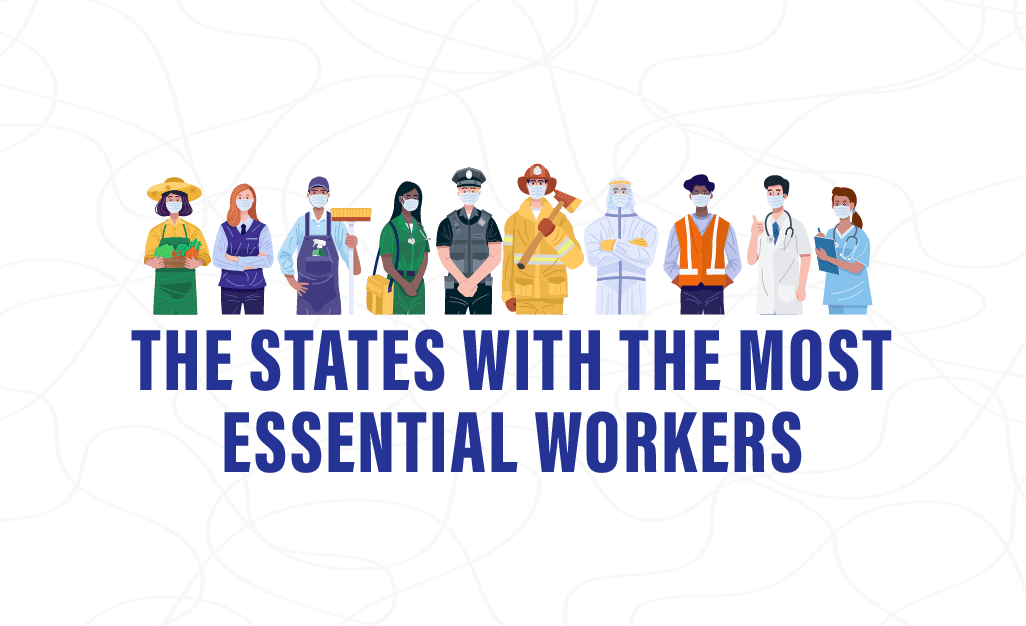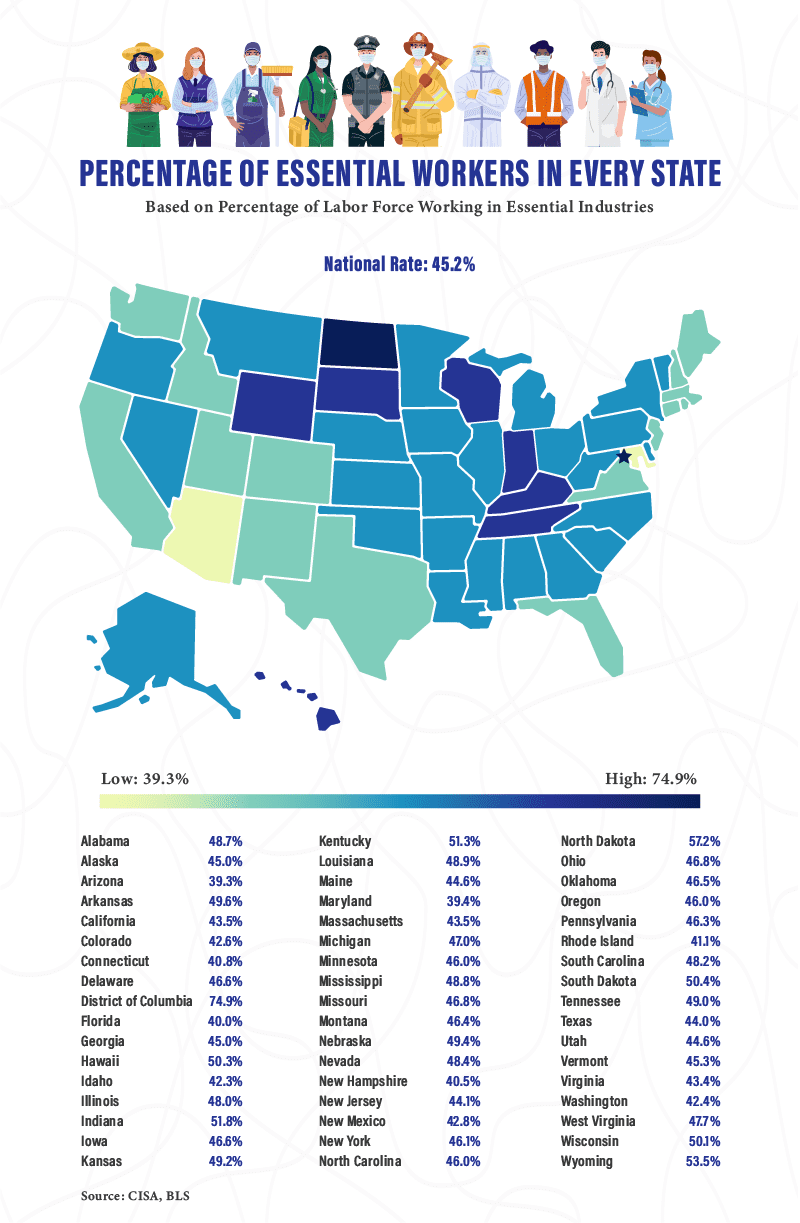
The United States has been weathering the effects of the COVID-19 pandemic for weeks now, and, as a result, we’ve been forced to reckon with the many inequities that are coming to light. The regular schedules of work, daycare, and school that families depend on have been uprooted, and millions of workers have lost their jobs and have no source of income to depend on right now. At United Way of the National Capital Area, we’ve worked to mitigate the impact that COVID-19 is having on residents of the Washington D.C. area through coordinating our Emergency Assistance Fund to promote the health, education and financial stability of our community.
What Are Essential Workers?
During this time, we’ve all been depending on the workers that have been deemed essential to our society’s continued functioning. The U.S. Department of Homeland Security defined 14 sectors of the economy as essential in March 2020. The list is intended to help state, local, tribal and territorial officials as they work to protect their communities while ensuring continuity of functions critical to public health, safety, and economic and national security. It includes workers such as doctors and nurses, as well as grocery store clerks, transportation workers, and janitorial staff. These workers are being dubbed front-line heroes because they are putting their lives on the line so communities can continue to function.
In light of this, we wanted to create a visual representation of where essential worker jobs are most concentrated in the United States. To do this, we decided to take a look at which states have the highest percentage of their workforce in these essential industries, as it gives us a solid idea of where the most essential frontline workers are in the U.S. right now. Read on to discover what we found out.
Methodology
The DHS list gives a detailed analysis of what each worker’s job function must be in order to be considered essential. While impossible to break down workers’ job functionality on such a granular level, we analyzed the number of workers in each industry and calculated the percentage of the labor force that is in essential industries in each state using data from the Bureau of Labor Statistics.
Percentage of Essential Workers in Every State
The states with the highest percentage of essential workers in their labor force include Washington, D.C. (74.93%), North Dakota (57.20%), Wyoming (53.46%), Indiana (51.80%), and Kentucky (51.26%). We can consider these numbers as an indicator of how concentrated critical industries are in that state. For example, the main industries in Washington D.C. include government, healthcare, and community services – all of which are deemed essential under the current situation. In North Dakota and Wyoming, major industries include agriculture and energy.
States with the Most Essential Workers in Healthcare
Knowing that the front line of workers facing this pandemic are in the healthcare industry, we also wanted to call out the states with the most essential workers in healthcare. As you can see, healthcare workers only make up about 5% of our national labor force.
The District of Columbia is tied with West Virginia for the highest concentration of healthcare workers in the country at 7.3%. Other states with high percentages of healthcare workers in their labor force include South Dakota (6.7%), North Dakota (6.7%), and Delaware (6.4%). On the other hand, states like Rhode Island, and Ohio face a very low percentage of healthcare workers compared to the rest of the country, at 3.15% and 2.67% respectively.
As you can see, the national rate of essential workers in the labor force is 45.2%. Areas of the country that might not typically be in the foreground of our economic life are becoming clear centers of essential industries. In each state, essential workers make up at least 39% of the workforce. However, as we reported in our 2018 Alice Report, the most common professions in our economy also tend to be paid the least. In 2016, the mean hourly wage for cashiers in Maryland was $9.45. For janitors and cleaners, it was $11.55. We must also consider the income inequality many workers face, despite now being deemed “essential.”
What does this tell us about our economy? In the years to come, that might be a question that communities will have to face. In the meantime, find ways to support essential workers in your community if you are able. At United Way of the National Capital Area, we’ve partnered with Windows Catering to deliver 8,000 meals to frontline hospital personnel in medical facilities across the region. For more information on how to give to the United Way NCA Emergency Assistance Fund, visit www.unitedwaynca.org/help.
Interested in the percentage of essential workers in your state, as well as the top essential industry in all 50 states? Check out our interactive table below to sort through our full dataset.





